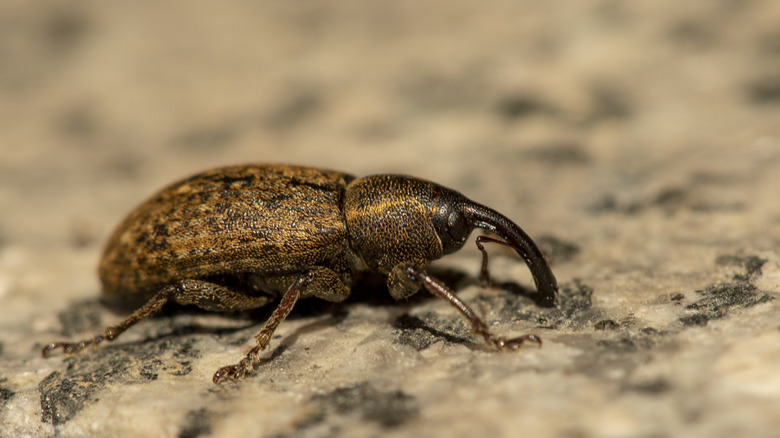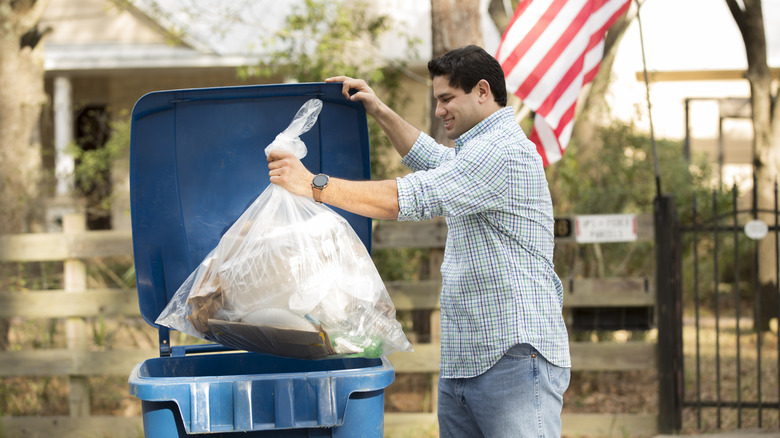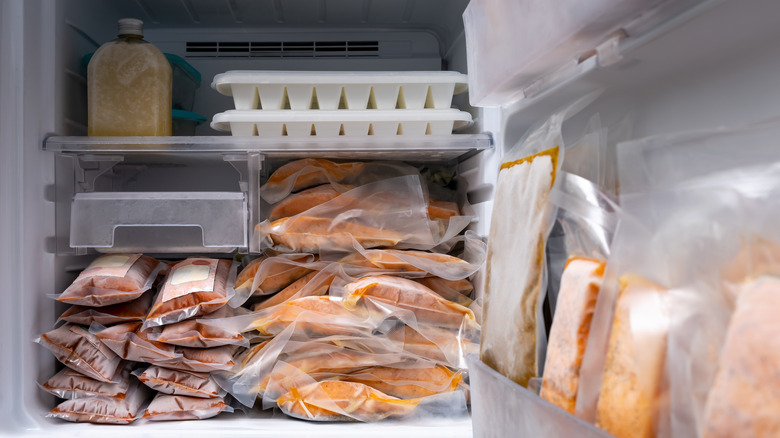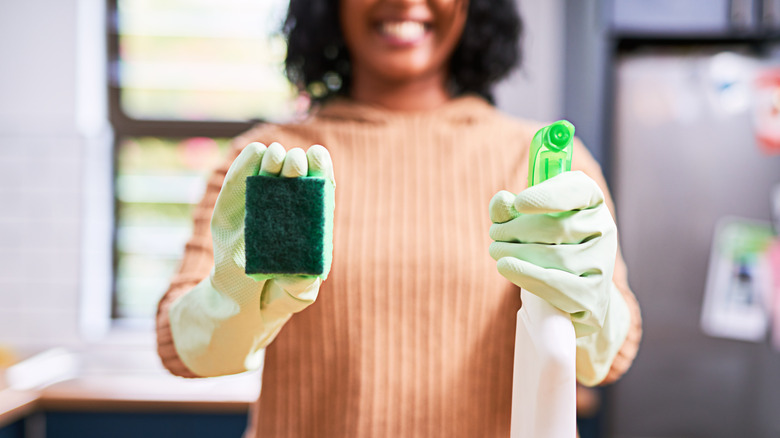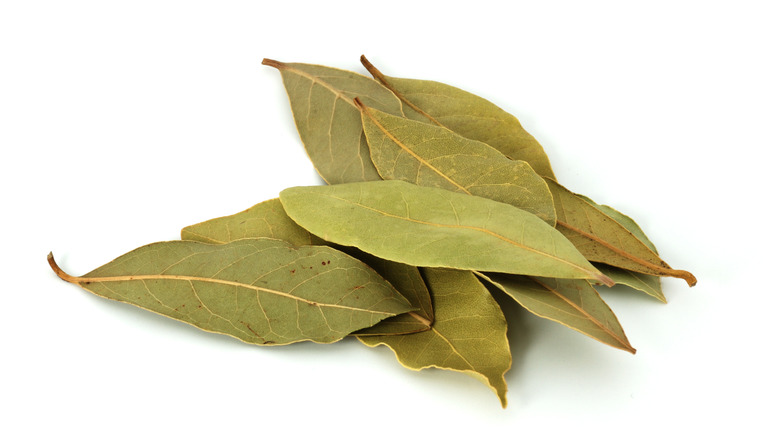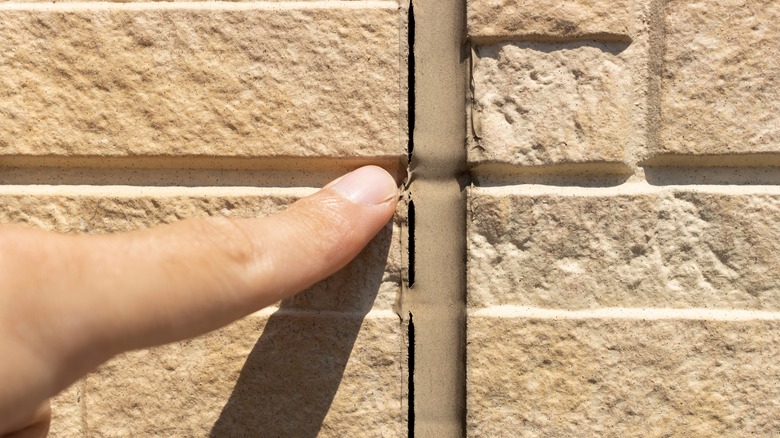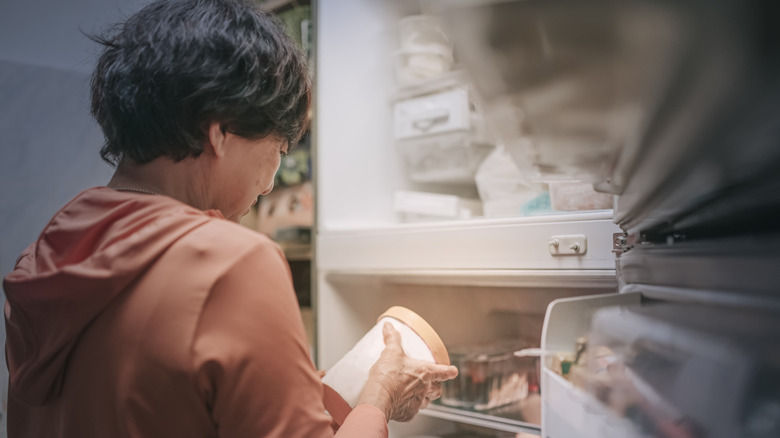How To Keep Weevils Out Of Your Home
Weevils are tiny pests that can cause a big problem in your kitchen pantry. The insects — which are a type of beetle — are typically black or reddish brown in color and only about ⅛- to ¼-inch long. After the adult females lay their eggs inside grains, kernels, or seeds within your pantry, an infestation can grow quickly. If you have one, you may see some grains and kernels with holes through them, notice a musty scent coming from some of the goods in your pantry, or actually see the bugs themselves.
While a weevil infestation is not going to be fun to remediate, don't panic. There are several steps you will want to take to get the insects out of your house — and stop them from being able to get back in. Read on to learn more to keep these pests from ruining your food items and making your life more difficult.
Seal and discard any food infested by weevils
Once you've determined that you're dealing with a weevil infestation, the first thing you should do is get rid of any infested foods. Getting these out of your pantry as quickly as possible will help prevent the infestation from spreading more. As much as it may pain you to toss food that you spent your hard-earned money on, if there is any question about whether it is infested with weevils, you're better safe than sorry and will want to get rid of it.
It is also a good idea to toss any open boxes or containers close to these items. The weevils may have made their way into them to lay eggs, which just might not have hatched yet. Similarly, you will also want to get rid of the packaging for all of the items in question. Because weevils can hide in cardboard packaging, you should keep any sealed bags of cereal, rice, and other things but discard their cardboard covers. Basically, if something isn't new or wholly sealed, don't risk furthering your infestation by keeping it.
Freeze food that you do not want to throw out
While throwing out all potentially infested food is the best option, there may be times when you don't want to get rid of an item. Perhaps you spent a lot of money to purchase it, or it is a favorite that is no longer sold in stores. In these instances, you may be able to salvage the food item while still putting an end to the infestation by freezing it.
When freezing infested food, it is important to ensure your freezer is set to 0 degrees or colder. The affected items should be promptly placed in the freezer. Don't leave them sitting on the counter or something similar; you don't want to allow the pests to move. Leave the item in the freezer for a minimum of three days. After that time, any weevils should have been killed, and you can safely return the item to your pantry.
Empty and disinfect your pantry
Once you've identified and removed all the infested or potentially infested foods, the next step is to give your pantry a really deep cleaning. Start by removing everything from the shelves. Then, use the attachment tools on your vacuum cleaner to clean the space. Take care to vacuum on top and underneath each shelf, along the floors and walls, and inside any cracks or crevices in the pantry. Weevils can be good hiders, and you don't want to leave any behind.
After the pantry has been vacuumed, move on to disinfect the shelves. Use a disinfecting spray to wipe down the surfaces. Then, follow up with a hot water rinse. This not only adds an extra safeguard against the infestation, but also ensures you clean away all product residue. This is important since you'll be storing food on those shelves, and don't want to expose it to harmful chemicals.
Clean all items before returning them to the pantry
If you didn't realize how persistent weevils were and how good they can be at hiding before you started reading this, you probably do now. For this reason, you want to thoroughly wipe down everything before putting it back into your pantry. Wet a microfiber towel with hot water and wipe down the surface of each item. Work carefully to avoid missing any potential areas where weevils may be hiding. Rinse the cloth off frequently and re-wet it with hot water. You can also change out the water several times to ensure you're keeping things as sanitary as possible.
If you haven't already discarded cardboard packaging, now is a good time to do so as well. Remember, a few weevils may be hiding along the cardboard, and could start a new infestation if returned. They can hide in corners and edges, so you can easily overlook them.
Place natural deterrents in and around your pantry
Now that you've cleared up the infestation, the last thing you want is to find yourself facing more weevils in the coming days, weeks, or months. Take time to protect your pantry from future guests. Fortunately, you don't have to use harsh chemicals to deter them. There are several natural ingredients that they are known to dislike, so placing them in and around your pantry can help keep a new crop of weevils from settling in.
Black pepper is one such example. Try putting pepper into small mesh satchels and positioning them in the corners of each shelf in your pantry. Bay leaves are another ingredient that can keep your pantry clear of a weevil infestation. You can scatter a few fresh bay leaves over your pantry shelves or the floors leading up to the pantry. They can even be added to packages of dried goods to keep the pests from choosing to go inside them. If you have pets, you may want to choose a different deterrent, as bay leaves are toxic to both dogs and cats.
Check for and seal any cracks or openings to your home
There are several ways weevils may enter the home. One is finding cracks in the walls, foundation, or around doors and windows where they can sneak through. Keep in mind that weevils are very tiny, so these cracks do not have to be large to provide them access to your home and all of your pantry goods.
Closely inspect your home's perimeter, looking for anywhere that could allow the insects to enter. Some key areas to check include around any of the home's windows and doors, along the siding (look for cracks), along the attic and ridge vents, beneath the eaves and soffits, and around the areas where utility or electrical pipes or wires enter the home. If you find any cracks or holes, use caulk, mesh repair patch, or something similar to close them off and deny the weevils access.
Freeze newly-purchased dried goods before putting them in your pantry
A weevil infestation may occur after a few pests enter through cracks or holes along the edges of your home. However, this is not the only way these annoying bugs can get into your home and start causing problems. It is also possible for you to bring them into your home unknowingly. Sometimes, weevils may already be hiding in the foods or packaging you bought from the grocery store. However they get in, once they're in, they can start mating and multiplying and quickly take over several other items in your pantry.
If you've dealt with a weevil infestation before and don't want to put yourself through clearing a new one up, consider freezing the dried goods you purchase at the store, along with their packaging, before you put them in your pantry. This will kill any weevils that may be hiding before they get the chance to cause serious damage.
Store dry goods in sealed metal or glass containers
Weevils won't be able to infest the food items in your pantry if they can't actually get at the grains themselves. However, once you open a bag of rice or a canister of oatmeal, it is no longer airtight. Even if you close it with a clip, there will still be tiny openings large enough for the weevils to get in. Instead of leaving foods in their original packaging inside your pantry, consider moving them to an airtight storage container.
With an airtight container, weevils won't be able to get in and wreak havoc. Moreover, most containers are also see-through, which means you'll be able to monitor each item for a potential infestation. Some storage options include glass mason jars, lidded plastic tubs, or glass containers with snapping sides that create a tight seal. Plus, it will make your pantry look all the more aesthetically pleasing!
Avoid purchasing dry goods in bulk
Stocking up on rice, oatmeal, flour, and other dry goods at stores like Costco can help you save money. The only problem is that you are left with such a large quantity of each item that it can take you a long time to use it all up. This is a less-than-ideal circumstance if you're facing the potential for a weevil infestation. When you have such a large quantity of dry goods sitting around, you're practically inviting these pests to stop in and get comfortable.
Rather than purchasing so much ahead of time, try to buy only what you'll need for the immediate future. This will limit the packaging and extra food in your pantry, removing potential places for the weevils to mate and lay their eggs. While you won't be able to enjoy the savings of buying in bulk, you can still end up saving more in the long run by not needing to throw out as many infested food items.
Keep your pantry clean
Keeping your pantry clean can also go a long way in preventing a weevil infestation. Spills on the shelves or the floor will serve as an invitation for these pests to come, mate, and start laying their eggs. For this reason, it is essential to quickly clean up messes, rescind that invite, and ensure that weevils don't find your pantry a welcoming space. It won't do much good to have your dry goods in airtight containers but leave a pile of spilled oats or rice covering your shelves.
To keep your pantry clean, regularly empty the shelves and wipe them down with a microfiber cloth and hot water. Take care to get into the corners where crumbs can hide more easily. Then, vacuum the floor well to pick up any remaining crumbs. In addition to keeping your pantry clean, give the same level of attention to the rest of your kitchen and any other areas where food is stored or eaten.
Hire a professional
Weevil infestations can be very difficult to clear up. If you feel like you've tried everything but can't get rid of the pests in your pantry — or they keep coming back — it may be time to hire a professional. Pest control companies are experts at remediating infestations and will know the best approach to eliminate your weevil problem.
Before choosing a company to work with, do some research. Look for companies that have received high reviews from past customers. After narrowing down your options, have a few conversations to learn more about how each company proposes tackling your weevil problem. Ask questions to learn about the types of chemicals they'll use to kill the bugs and whether these chemicals are safe around humans or pets. You should also find out how much they'll charge, how many treatments will be needed, and whether they offer guarantees for their services.
